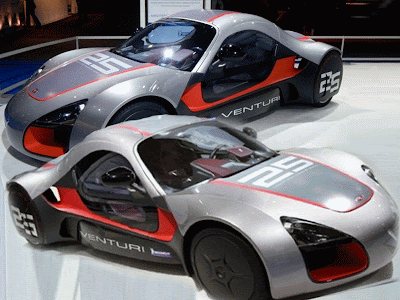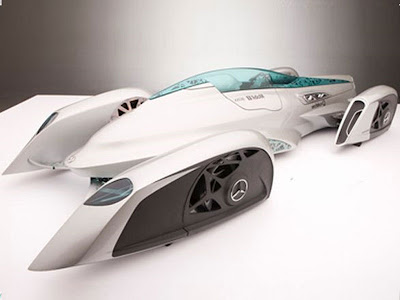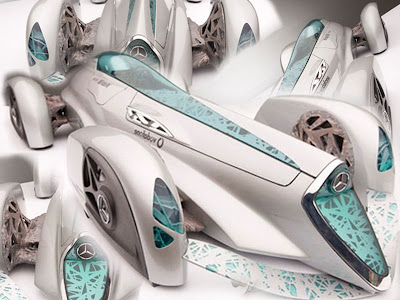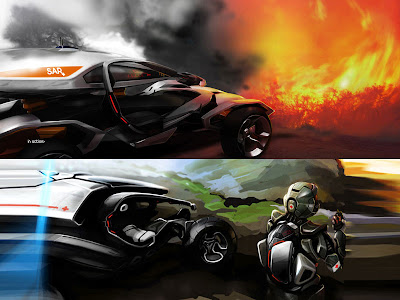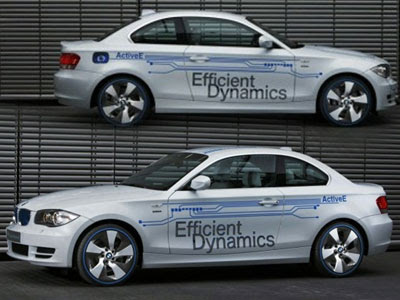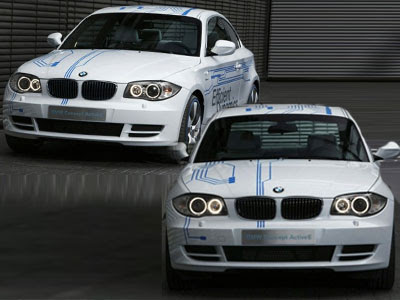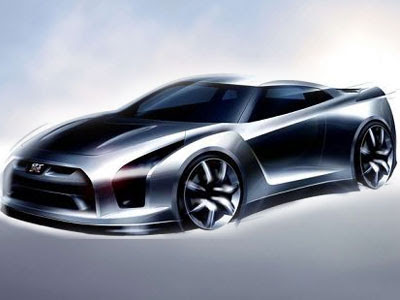 Daimler AG announced that the second generation of mass-producing electric Smart in 2012. The announcement came during a visit by French President Nicolas Sarkozy, electrical installation, built with Smart made in Hambach, France.
Daimler AG announced that the second generation of mass-producing electric Smart in 2012. The announcement came during a visit by French President Nicolas Sarkozy, electrical installation, built with Smart made in Hambach, France.There are a few of the cars will begin production in November this year, Daimler is a test product durability and battery capacity. The use of a package of compact lithium-ion and the United States electric car company Tesla Motors, the second generation smart fortwo's commitment to electric space and not enough room for two adults. Supply of energy at 30 kW (40 hp) and 120 Nm (89 Nm) torque in the category, with a range of 135 kilometers (84 miles). The vehicle will be the first to begin testing this year in cities throughout Europe and the United States makes smart cars can reach 60 km / h in 6.5 seconds (as is the case with petrol models), and limited to the speed of 100 km / h (60 mph).
Ray: Smart fortwo electric drive
 The official release after the jump:
The official release after the jump:Large-scale series production of Smart electric motor to start in 2012 in Hambach
* Declaration on the occasion of a visit by French President Nicolas Sarkozy
* In just five years of a pilot project to produce for customers
* Production of a series of small units of 1000 to begin in November 2009
* Dr. Dieter Zetsche: "Leadership-free emission in the urban environment is already possible today. "
Hambach, France / Stuttgart (Germany) - Daimler AG announced today that it opted smart factory in Hambach, France, as the location for the production of a series of future smart fortwo
electric motor. As of 2012, and a high degree of innovation, the electric car, and equipped with the most Modern lithium-ion battery, and will roll off the assembly line in production on a large scale, and will To provide to its customers through a sales network smart. The announcement came on the On the occasion of official visit of French President Nicolas Sarkozy in a factory Hambach.
Dr. Dieter Zetsche, Chairman of the Board of Management DaimlerChrysler and Head of Mercedes-Benz Cars: "The Smart electric drive proves that the emissions-free driving in urban areas The environment is already possible today. And will begin initial production series now with 1000 Vehicles, will be the first of which is delivered to customers by the end of this year. As 2012, the drive electric smart fortwo, and then be part of a regular program of the product Smart brand. With our decision to select the production here in the mother plant in Hambach, and we Determine the path of both to produce a series of electric cars and for the future of this Assembly plant is very innovative. "
Daimler will invest the amount of double-digit million euros in a factory for the production of Hambach The next generation of the drive smart fortwo with electric - Lithium-ion battery. During his visit, Visit, President Sarkozy that the French government will support the project through Pat (President of Cote du territoire Aménagement) program. More support is to be submitted Lorraine region and sections de la Moselle. Will all these measures include a total of 15 percent of the investment. The president is visiting factory today - among other things Between getting a first hand impression of environmentally compatible engines in the future.
In November 2009, the plant will start to produce a small chain of about 1000 units of Smart Fortwo electric drive. In a first step, these cars will be provided to customers Participate in various projects of movement in the major cities in Europe and the United States, in order to Generate additional reactions from use under the conditions of everyday life.
As of 2012, will be produced Smart Fortwo electric drive in sizes much larger as And will be sold as a regular part of a portfolio of smart products, and through the sales network smart. Smart emphazises thus leading role in the way to travel with individual local Free of emissions in cities and urban areas.
The first milestones in 2007 and 2008
Since 2007, the Smart brand has taken a leading role in the electrification campaign Systems. Then, I started driving smart free of emissions in the difficult conditions of daily city Traffic in London. The 100 smart fortwo electric drives of the first generation in Customer process process. The reactions of this project is very positive and He emphasized the high degree of maturity of this concept car. Only one year later, the company introduced the second generation with more advanced Electric motor and innovative, and Lithium-ion high efficiency. Lithium-ion technology Decisive advantages over other types of batteries including higher performance, shorter Shipping times and a long life and high reliability. In addition, the smart fortwo electric drive Can be charged in the ordinary household electricity socket. Success Story:
 Smart plant in Hambach Opened the Smart Hambach factory in 1997. Since 1998, has produced a smart Fourtou, since 2007 in the current generation. In 2008, more than 800 workers at the factory and Produced some of the more than 800 people employed by the partners in the system of about seven units of 140 000 Smart fortwo. In September 2008, celebrated the tenth anniversary of the brand along with the Smart 1000000 produced in the factory Hambach. The Hambach factory, such as innovative production concept since its inception:
Smart plant in Hambach Opened the Smart Hambach factory in 1997. Since 1998, has produced a smart Fourtou, since 2007 in the current generation. In 2008, more than 800 workers at the factory and Produced some of the more than 800 people employed by the partners in the system of about seven units of 140 000 Smart fortwo. In September 2008, celebrated the tenth anniversary of the brand along with the Smart 1000000 produced in the factory Hambach. The Hambach factory, such as innovative production concept since its inception:The assembly line in the form of a plus sign is designed to meet the demands of the optimal The General Assembly, transport and logistics, and ensures that production processes with high efficiency. This principle Partners in the system for the supply of units directly to the assembly line, which reduces the Transport and logistics effort to a minimum, and this also provides an advantage with respect to Ecological aspects. In addition, environmentally friendly and cost-effective shop, which is The concept of energy with plenty of opportunities for savings and the principle of building Vehicles to ensure translation of the product eco-responsibility for the brand smart In production.




